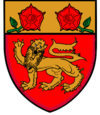Bibliography
- O'Hart, John (2007). The Irish and Anglo-Irish Landed Gentry: When Cromwell came to Ireland. Vol. II. Heritage Books. ISBN 0-7884-1927-7.
- Johnston-Liik, E. M. (2002). History of the Irish Parliament, 1692–1800, Publisher: Ulster Historical Foundation (28 Feb 2002), ISBN 978-1-903688-09-0
- T. W. Moody, F. X. Martin, F. J. Byrne, A New History of Ireland 1534–1691, Oxford University Press, 1978
- Leigh Rayment's historical List of Members of the Irish House of Commons . Cites: Johnston-Liik, Edith Mary (2002). The History of the Irish Parliament 1692-1800 (6 volumes). Ulster Historical Foundation.
